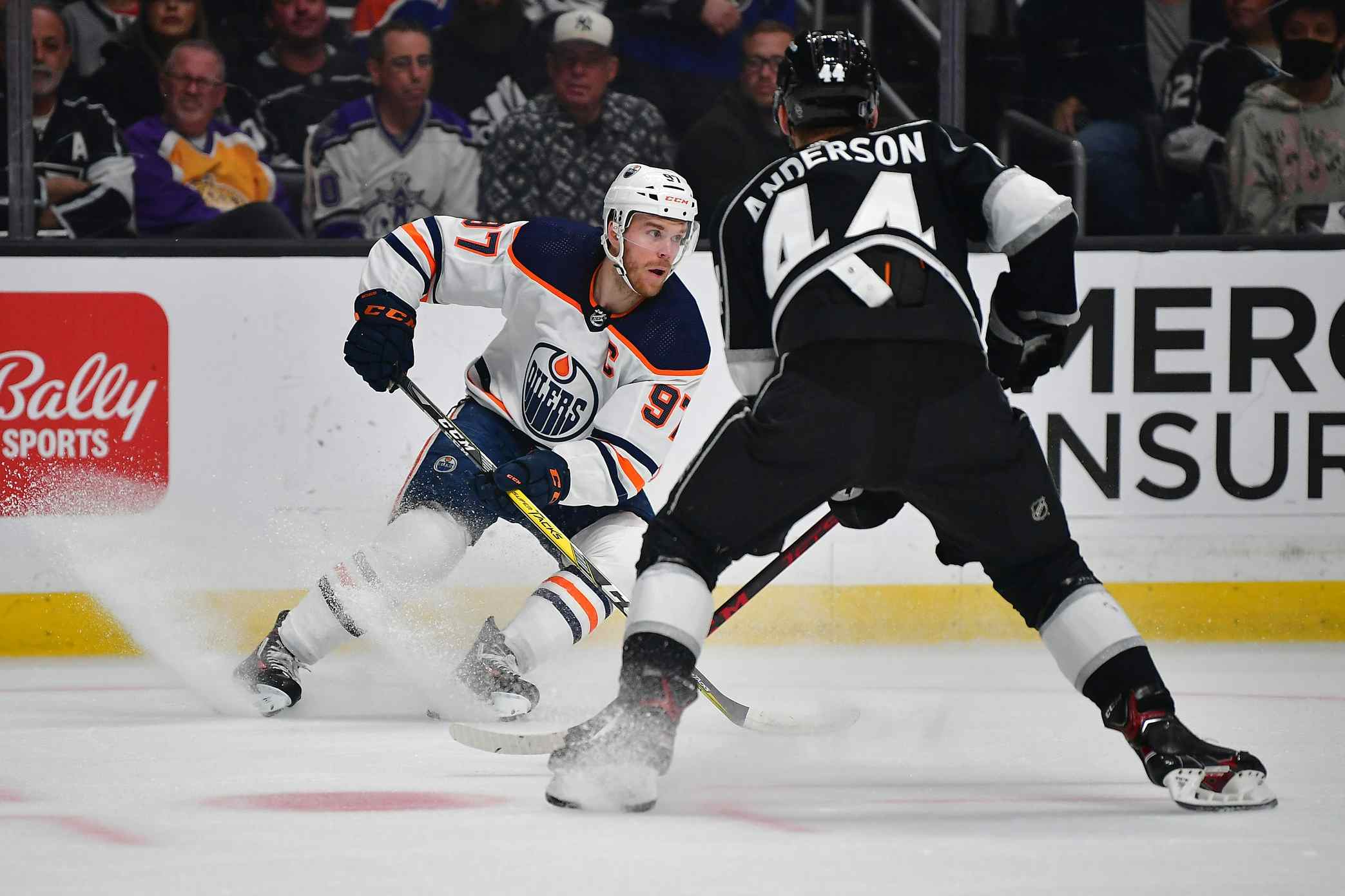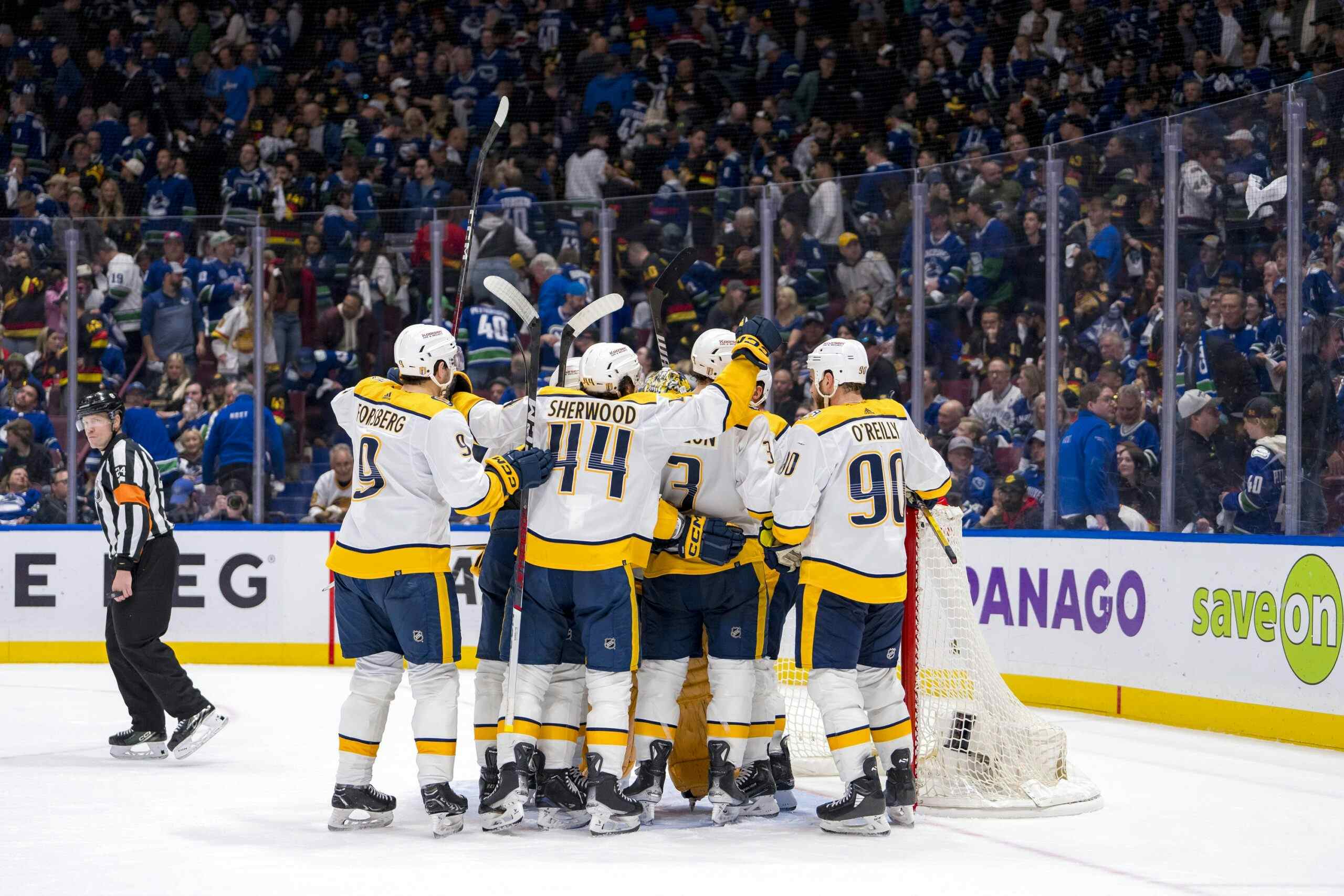How the Edmonton Oilers run their draft
The Edmonton Sun’s Terry Jones wrote a fascinating piece the other day about the Edmonton Oilers’ work at the 2010 NHL Draft. While the tone of the piece – and particularly the quotes from AHL head coach Todd Nelson – are Prendergastian in terms of their optimism, it’s well worth reading because the team reveals a lot of their philosophy on draft day.
In my experience, people in any field – sports, politics, whatever – are at their most revealing when they are confident in the decisions they’ve made. Jones’ piece is clearly premised on the idea that the 2010 Draft was a spectacular success (I think it looks good, but not outrageously so), and Stu MacGregor really gets talking about how the Oilers made the decisions they did.
Positional Picks
It’s abundantly clear that –outside of the first round, at least – the Oilers make decisions based on perceived positional need.
- MacGregor on Martin Marincin: “We got the pick in a trade for Riley Nash and with that pick we were really hoping to get a defenceman.”
- MacGregor on Tyler Bunz: “That’s the pick we’d decided ahead of time that we intended to use to get a goalie.”
My take: Within limits, this is fine. For first round picks, there’s likely enough scrutiny to objectively choose the best player available with little regard for position – this is especially true at the very top of the draft – but with later picks there is always going to be a cluster of guys without much daylight between them. In these cases, deferring to positional balance isn’t a bad thing. Also, with goaltenders, my personal belief is that given the difficulty in projecting them forward, using a late round pick on the best guy available (as the Oilers did with Bunz and previously with Roy) is an excellent strategy.
Size

- MacGregor on Tyler Pitlick: “We went for size in Pitlik. We just saw a big kid at 6-foot-2 with a real good wrist shot.”
- MacGregor on Curtis Hamilton: “Hamilton’s selection was totally about size and real good hockey sense.”
- MacGregor on Ryan Martindale: “Again, he was a big kid.”
My take: Again, within limits, this is fine. Size is a virtue. The thing with picking guys like Pitlick, Hamilton and Martindale is that they were all consensus picks to go in that range – they were hockey players who happened to be big, not big guys who happened to play hockey. The Oilers have, over the years, struggled to stay within limits, though – the Prendergast years are full of coke machine picks and selections like Cameron Abney and Mitch Moroz under MacGregor bear close scrutiny.
Minimizing risk on European picks
- MacGregor on Martin Marincin: “A lot of the decision involved the knowledge he planned to come to North America to play junior as an 18-year-old.”
- MacGregor on Kristians Pelss: “Frank Musil did some clandestine work to see if he’d come over to play for the Oil Kings. Knowing that, I figured ‘Let’s take a swing at this guy.’”
My take: One of the difficulties with making a European pick is knowing whether he’s really interested in an NHL career, as well as whether he’s in a good development situation. A good way to minimize those risks is to focus on Europeans willing to play major junior. The Oilers haven’t made it a hard and fast rule – see Oscar Klefbom – but I’d argue it’s healthy that they consider this perspective.
Assessment of draft success

- More MacGregor: “If you get two guys who make it to the NHL, that’s a real good draft. Three is exceptional. Any more beyond that is off the charts.”
My take: There’s enough ambiguity in MacGregor’s statement (i.e. What constitutes a guy who ‘makes it?,’ Should first overall picks be included?, etc.) that it’s hard to know for sure where his line for success/failure is. Personally, I think a team that gets two-three full-time NHL’ers out of a given draft year (excluding first overall picks) is probably doing fairly well.
Final points: Notes on the 2010 Draft
I’d be remiss if I didn’t make a few points on the 2010 Draft while writing on this. Jones is bullish (“It may turn out to be one of the greatest days in Edmonton Oilers history”), while Lowetide wrote an intelligent piece the other day in which he expressed optimism.
I like the draft as a whole; I think it was good but not outrageously so. At first overall the team made a pick I agree with in Taylor Hall, but had they chosen Tyler Seguin they would not yet have cause to regret the decision, so it really comes down to the late work.
I only really see two guys as potential impact players in the NHL: Martin Marincin and Tyler Bunz. Marincin’s athletic tools are exceptional and he’s clearly a bright player, but he’s raw enough that an extended minor-league stint to fine-tune his defensive game is probably in order. Bunz is tracking very well, but is three games into his pro career so it’s far too early to say definitively one way or the other.
Beyond that, there are a bunch of legitimate prospects. Tyler Pitlick is a good, well-rounded player but has never produced enough at any level post-draft to justify assessment of him as a scorer in the NHL. I think he’ll play, but probably as a depth guy. Curtis Hamilton’s coming off a tough year but has good size and physical attributes and might round out as a lower-tier NHL’er (he’s a PK regular in Oklahoma and has looked good as a depth guy early). Brandon Davidson is a rookie pro but seems to have a nice mix of abilities – he reminds me a little bit of Corey Potter in terms of how he plays the game.
Then there are long shots. The organization loves Kristians Pelss and it’s easy to see why, but his offence has been so anemic over the years that I have trouble seeing him as a guy who sticks in the NHL. Ryan Martindale spent last year in the ECHL and struggled; people have come back from that but right now he’s decidedly a dark horse. Tiny Kellen Jones is a scorer in college but may have a tough transition to the professional game.
There were other picks too, already nearly forgotten. Jeremie Blain wasn’t signed by the Oilers but did catch on with the Canucks organization; he’s a point-per-game guy in the ECHL through five games and someone I likely would have retained if I were running the Oilers. I’d slot him in ahead of Pelss or Martindale. 6’2” Drew Czerwonka was less lucky; he’s playing for Kootenay in the WHL and has had a tough start to the season after an off-season injury. Injuries have been a problem down the line for him.
It’s a good group overall, but not the stuff of legend.
Recently by Jonathan Willis
- Big decisions: the Curtis Joseph trade that never happened
- Barons win 4-3; Justin Schultz now leads the AHL in scoring
- NHL offers players a 50/50 split
- Mitch Moroz is standing still
- 10 Points: This is no time to panic!
- The Edmonton Oilers blue line: It’s a dog eat dog world
- Nugent-Hopkins, Eberle pointless in 2-1 loss
Recent articles from Jonathan Willis





